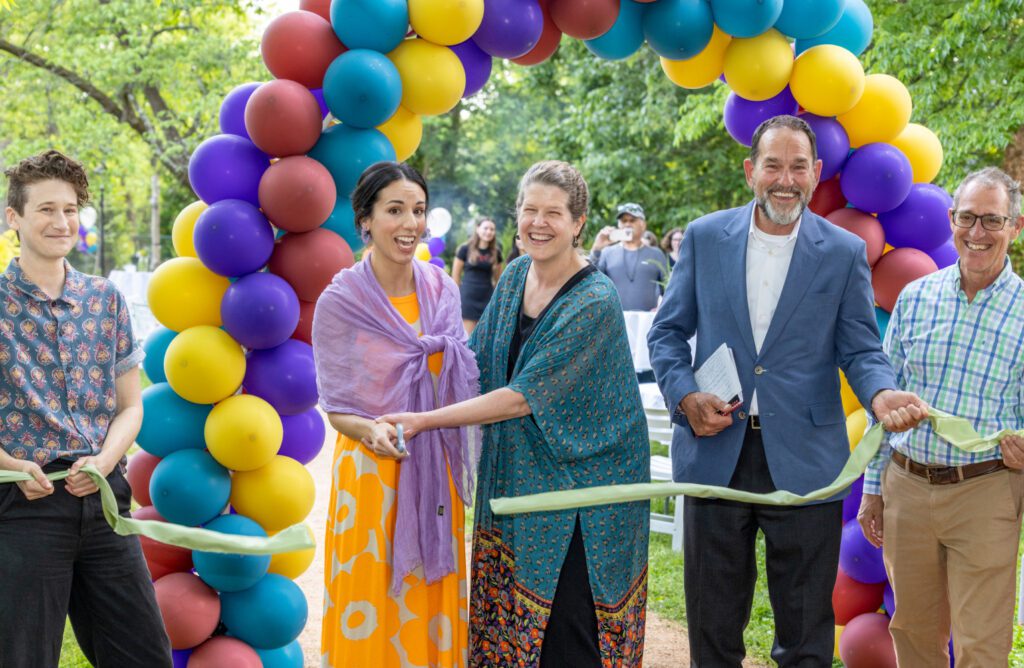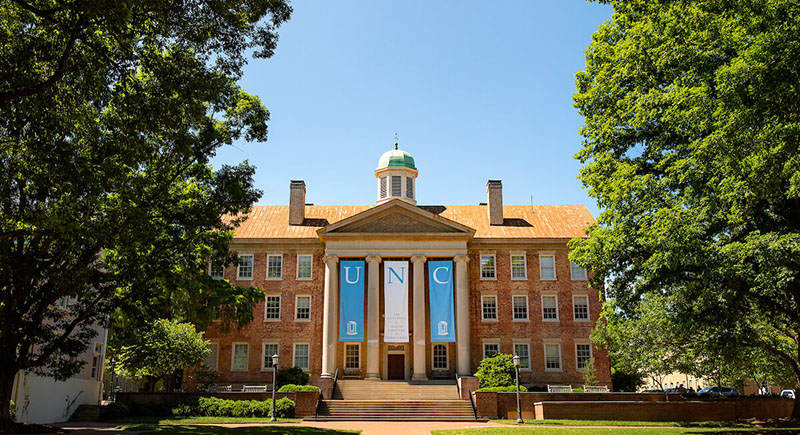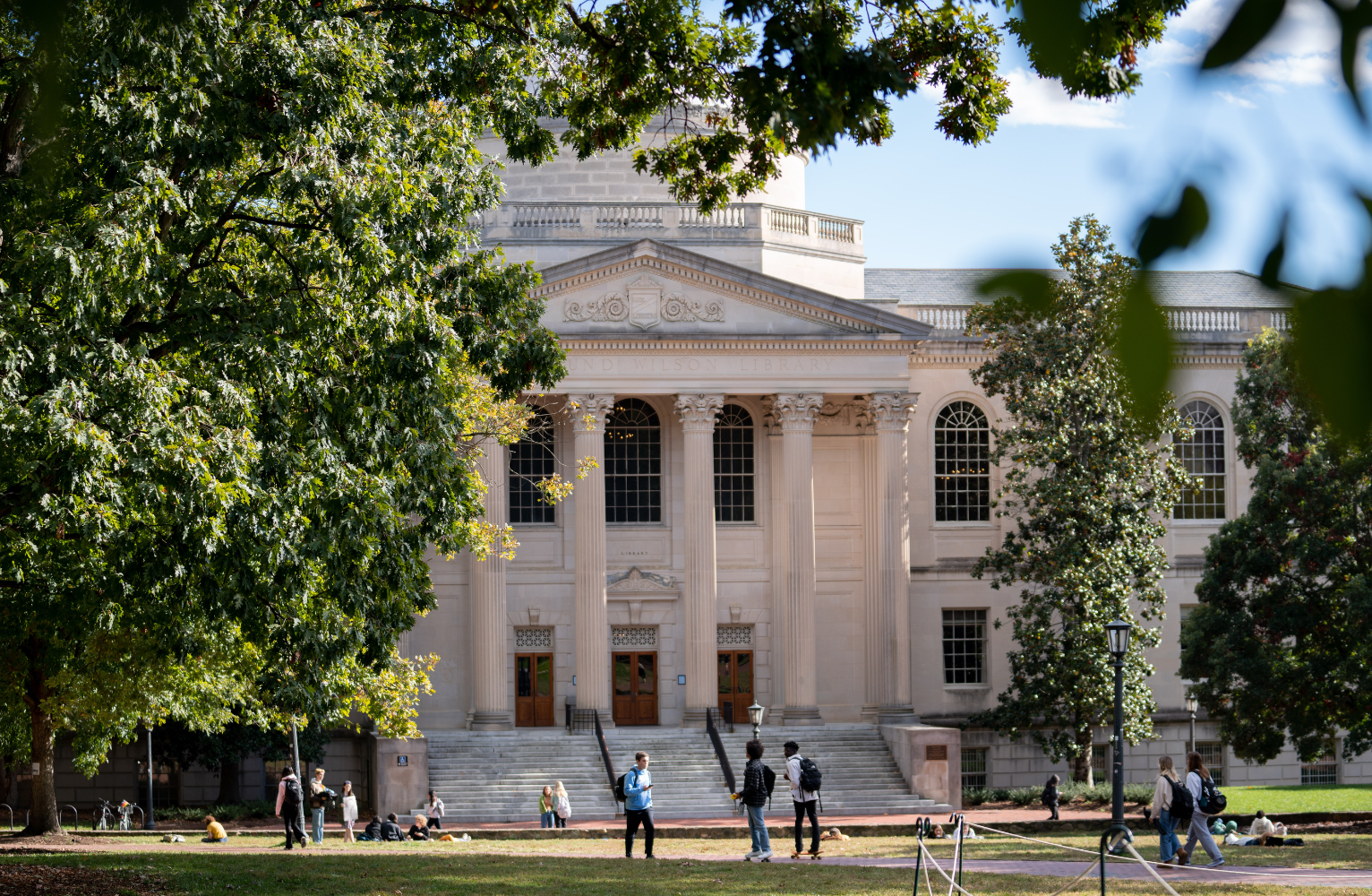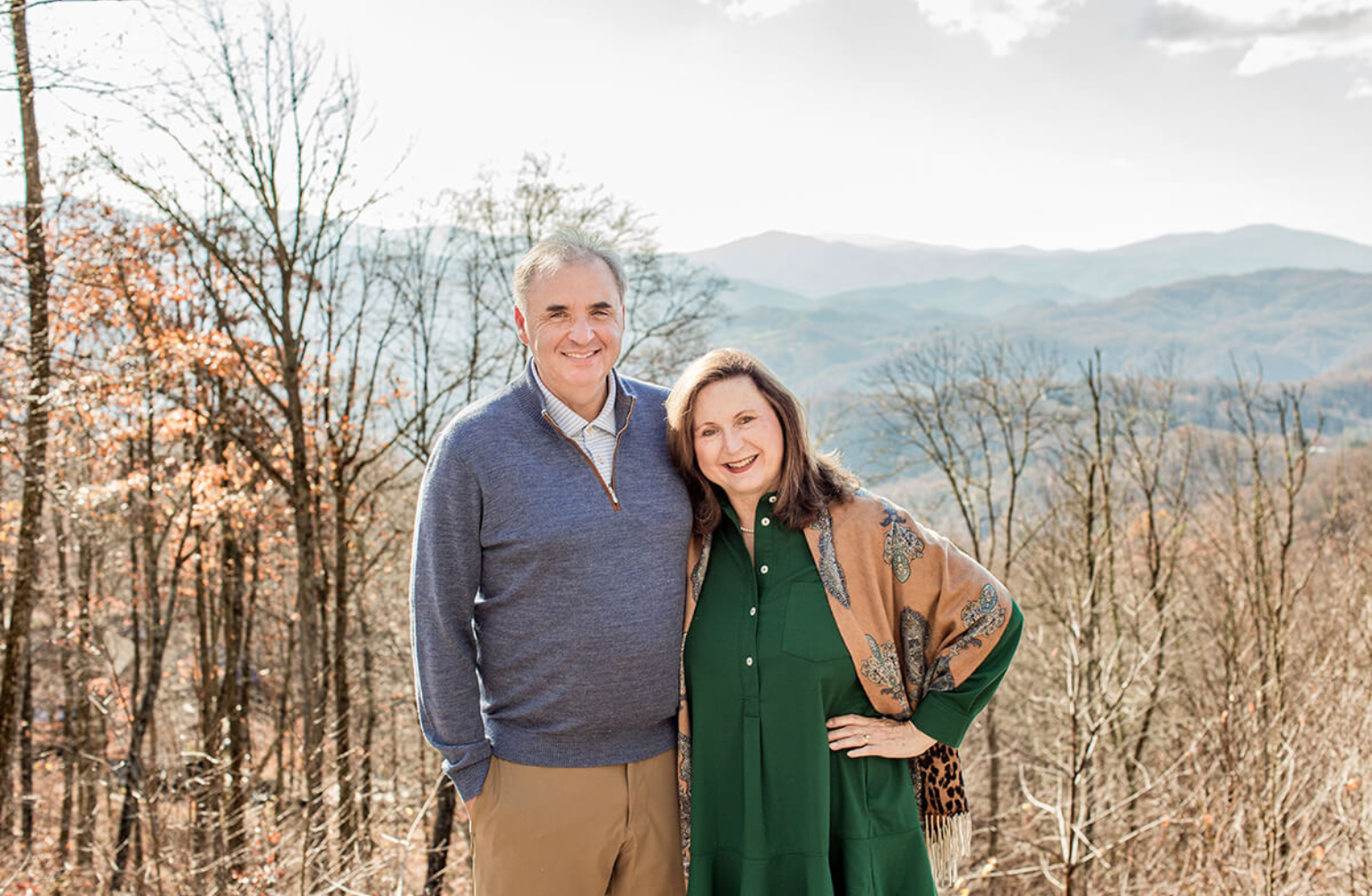
From left: Becca Wait, North Carolina Botanical Garden (NCBG); Marissa Carmi, American Indian Center; and Joanna Massey Lelekacs, Damon Waitt and Dan Stern, NCBG; attend the ribbon cutting for the American Indian Cultural Garden at UNC-Chapel Hill. (Photo by Sophie Hughett ’25 )
The American Indian Center and North Carolina Botanical Garden collaborate to celebrate Native presence on and off campus with the opening of the American Indian Cultural Garden.
“I hope the Native American community on and off campus feel a sense of belonging, visibility and pride when they come to this space,” said Marissa Carmi, associate director of the American Indian Center, about the American Indian Cultural Garden. “I hope the non-Native on- and off-campus communities feel welcome here too and know that this space is dedicated to bringing people together.”
The American Indian Cultural Garden (AICG) stems from a partnership between the American Indian Center and North Carolina Botanical Garden. It emerged from community members repeatedly expressing a desire to see more visible places at Carolina as a testament to the Native presence here on campus and in North Carolina.
“The garden was created to celebrate the Native community here on campus, which is one of the largest Native communities in a university context east of the Mississippi River,” said Daniel Stern.
Stern is the director of horticulture at the North Carolina Botanical Garden (NCBG) and worked as the AICG’s project manager, overseeing the construction of paths and bridges, hardscapes and part of the garden design.
The American Indian Cultural Garden is located on Wilson Street, just west of the Carolina Inn. It envelops the Carolina Community, which is a production garden operated by the NCBG.
“The garden path takes visitors on a meandering walk through open spaces where there are herbaceous perennials and pollinator friendly plants,” Stern said. “Then, you continue exploring the path, passing hardscape features, like the medicine wheel and the ceremonial circle that has a fire pit in the center.”
The AICG recently held a workday where volunteers came out to help plant, weed and get the garden ready for the April 25 ribbon-cutting ceremony.
Becca Wait, horticultural curator at the botanical garden, along with three American Indian Center interns, were in charge of planting plans, plant designs and garden maintenance. Together, they planned where plants would go based on growing requirements, ensuring sun-loving plants were positioned in the sunniest spots. Everything in the garden has been purposefully chosen and thoughtfully laid out, reflecting extensive community feedback.
“We prioritized culturally important food crops that need full sun in this sunny patch of the garden, so we planted blueberries and collards, and when it gets a little warmer, we’re going to plant the three sisters — corn, squash and beans —,” said Wait. “We also planted lots of native pollinators like rudbeckia, bee balm, parthenium and so much more.”
The goal of the American Indian Cultural Garden is to provide a space for community gathering and become a place of learning, whether through signage in the garden, incorporating the garden in classes or hosting workshops about the garden.
“We’re hoping to do a lot of programming in this garden,” Carmi said. “One of the things we’d like to do is teach a class, like the workshops NCBG offers, about the garden to give more in-depth knowledge about what this space does and what it means for the Native community.”
The garden was made possible through support from the Mellon Foundation, the Jandy Ammons Foundation, the Jessie Ball duPont Fund and other local North Carolina philanthropies. Their support has been integral to the construction itself, has allowed the American Indian Center to hire undergraduate student interns, and will support future programming.
“I think it’s exciting that our project caught the attention of these philanthropies — that they chose to invest in us because they believe in its value,” Carmi said.
Support the American Indian Cultural Garden and the value it brings to Carolina Community.
Written by Terzah Dyer
Related Stories




